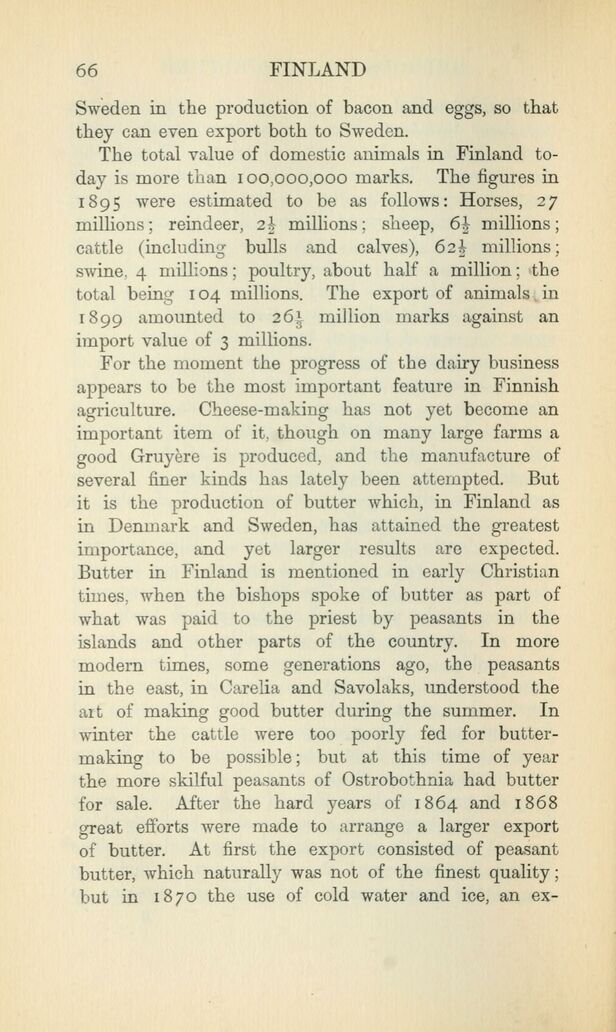
Full resolution (JPEG) - On this page / på denna sida - IV. Methods and Conditions of Agriculture

<< prev. page << föreg. sida << >> nästa sida >> next page >>
Below is the raw OCR text
from the above scanned image.
Do you see an error? Proofread the page now!
Här nedan syns maskintolkade texten från faksimilbilden ovan.
Ser du något fel? Korrekturläs sidan nu!
This page has been proofread at least once.
(diff)
(history)
Denna sida har korrekturlästs minst en gång.
(skillnad)
(historik)
Sweden in the production of bacon and eggs, so that
they can even export both to Sweden.
The total value of domestic animals in Finland
today is more than 100,000,000 marks. The figures in
1895 were estimated to be as follows: Horses, 27
millions; reindeer, 2½ millions; sheep, 6½ millions;
cattle (including bulls and calves), 62½ millions;
swine, 4 millions; poultry, about half a million; the
total being 104 millions. The export of animals in
1899 amounted to 26⅓ million marks against an
import value of 3 millions.
For the moment the progress of the dairy business
appears to be the most important feature in Finnish
agriculture. Cheese-making has not yet become an
important item of it, though on many large farms a
good Gruyère is produced, and the manufacture of
several finer kinds has lately been attempted. But
it is the production of butter which, in Finland as
in Denmark and Sweden, has attained the greatest
importance, and yet larger results are expected.
Butter in Finland is mentioned in early Christian
times, when the bishops spoke of butter as part of
what was paid to the priest by peasants in the
islands and other parts of the country. In more
modern times, some generations ago, the peasants
in the east, in Carelia and Savolaks, understood the
art of making good butter during the summer. In
winter the cattle were too poorly fed for butter-making
to be possible; but at this time of year
the more skilful peasants of Ostrobothnia had butter
for sale. After the hard years of 1864 and 1868
great efforts were made to arrange a larger export
of butter. At first the export consisted of peasant
butter, which naturally was not of the finest quality;
but in 1870 the use of cold water and ice, an
<< prev. page << föreg. sida << >> nästa sida >> next page >>